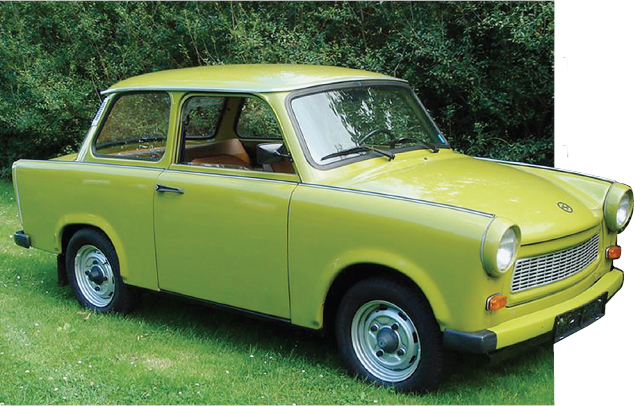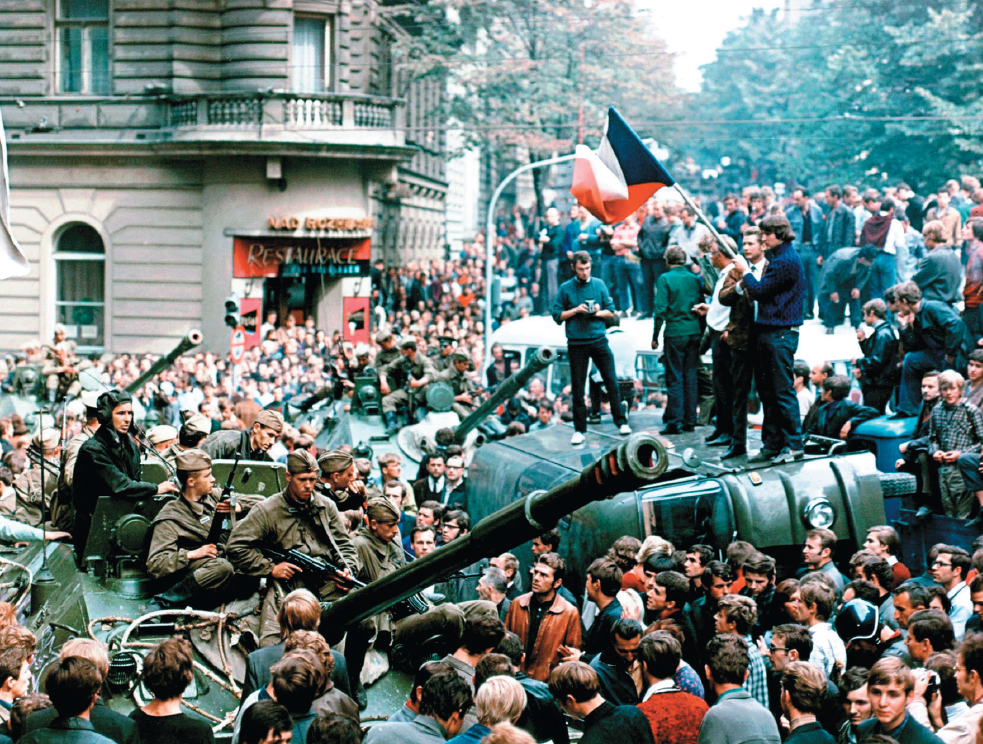The 1960s in the East Bloc
East Bloc economies clearly lagged behind those of the West, exposing the weaknesses of central planning. To address these problems, Communist governments implemented cautious forms of decentralization and limited market policies in the 1960s, with mixed results. At the same time, recognizing that the overwhelming emphasis on heavy industry was generating popular discontent, Communist planning commissions began to redirect resources to the consumer sector. Once again, results were mixed and varied from country to country. In general, ordinary people in the East Bloc grew increasingly tired of the shortages of basic consumer goods that seemed an endemic part of Communist society.

The East German TrabiThis small East German passenger car, produced between 1963 and 1990, was one of the best-known symbols of everyday life in East Germany. Though the cars were notorious for their poor engineering, the growing number of Trabis on East German streets nonetheless testified to the increased availability of consumer goods in the East Bloc in the 1960s and 1970s. (Visual Connection Archive)
In the 1960s, Communist regimes also cautiously granted cultural freedoms. Cultural openness only went so far, however. The most outspoken dissidents were harassed and often forced to emigrate to the West; other critics contributed to the rise of an underground samizdat (SAH-meez-daht) literature. The label samizdat, a Russian term meaning “self-published,” referred to books, periodicals, newspapers, and pamphlets published secretly and passed hand to hand by dissident readers because the works directly criticized communism. These unofficial networks of communication kept critical thought alive and built contacts among dissidents, creating the foundation for the reform movements of the 1970s and 1980s.
The citizens of East Bloc countries sought political liberty as well, and the limits on reform were sharply revealed in Czechoslovakia during the 1968 “Prague Spring” (named for the country’s capital city). In January 1968, reform elements in the Czechoslovak Communist Party gained a majority and voted out the long-time Stalinist leader in favor of Alexander Dubček (1921–1992). Dubček (DOOB-chehk) and his allies believed that they could reconcile genuine socialism with personal freedom and party democracy. They called for “socialism with a human face,” relaxed state censorship, and replaced rigid bureaucratic planning with local decision making by trade unions, workers’ councils, and consumers. The reform program proved enormously popular.
Remembering that the Hungarian revolution had revealed the difficulty of reforming communism from within (see "Foreign Policy and Domestic Rebellion" in Chapter 28), Dubček constantly proclaimed his loyalty to the Soviet Union and the Warsaw Pact. But his reforms threatened hard-line Communists, particularly in Poland and East Germany, where leaders knew full well that they lacked popular support. Moreover, Soviet leaders feared that a liberalized Czechoslovakia would eventually be drawn to neutrality or even to NATO. Thus the East Bloc leadership decided to end the Czechoslovak experiment, and five hundred thousand Soviet and East Bloc troops occupied Czechoslovakia in August 1968. The Czechoslovaks made no attempt to resist militarily, and the arrested leaders surrendered to Soviet demands. The reform program was abandoned.

The Invasion of CzechoslovakiaArmed with Czechoslovakian flags, courageous Czechs in downtown Prague try to stop a Soviet tank and repel the invasion and occupation of their country by the Soviet Union and its eastern European allies. Realizing that military resistance would be suicidal, the Czechs capitulated to Soviet control. (AP Photo/Libor Hajsky/CTK)
Shortly after the invasion of Czechoslovakia, Soviet premier Leonid Brezhnev (1906–1982) announced that the Soviets would now follow the so-called Brezhnev Doctrine, under which the Soviet Union and its allies had the right to intervene militarily in any East Bloc country whenever they thought doing so was necessary to preserve Communist rule. The 1968 invasion of Czechoslovakia was the crucial event of the Brezhnev era: it demonstrated the determination of the Communist elite to maintain the status quo throughout the Soviet bloc. At the same time, the Soviet crackdown encouraged dissidents to change their focus from “reforming” Communist regimes from within to building a civil society that might bring internal freedoms independent of the regimes (see "Dissent in Czechoslovakia and Poland").
What were the commonalities and differences between the counterculture in the West and anti-Soviet activism in the East?

